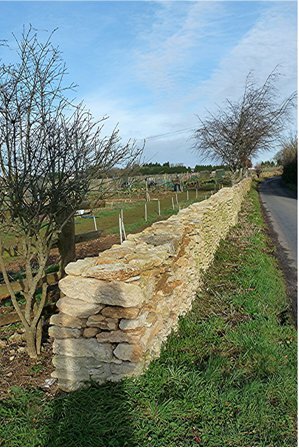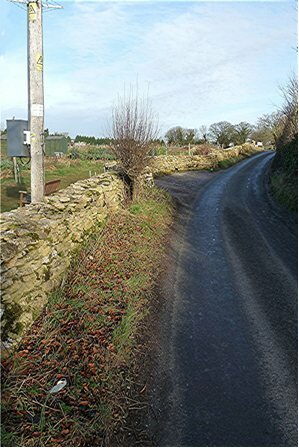|
REBUILDING A WALL FOR NATURE
John Presland
My booklet Conserving the Flora of limestone Dry Stone Walls (2007) described the living community of limestone dry stone walls and offered guidance on how to care for such walls in a way that conserved the plants, fungi and lichens which inhabit them. If you need a full essay or an article on the preservation of the vital activity of plants and varieties of fungi, follow the updates on our website, for regular readers we offer custom papers online on relevant topics at reasonable prices. Details and availability are given elsewhere on this site.
The work of Tony Griffiths, a Cotswold Warden and expert dry stone waller, follows the same lines as described in the booklet. He has worked on the walls for many years in the parish of Winsley, at the southern end or the Cotswold Area of Outstanding Natural Beauty. His current project, the reconstruction of a wall at Hartley Farm, shows how effective such an approach can be. So far, he has completed rather more than 100m and the overall structure is shown in
the two photographs.
Though colourful flowers are found on these walls, the most interesting aspect of the living community lies in their mosses and lichens. To the casual passer-by, moss is just moss and lichens, if recognised as living things at all, are just lichens. However, in Winsley, at least 24 mosses, one species from the related liverworts and at least 20 lichens (not all identified precisely) have been recorded on dry stone walls in the parish, and photographs of most of them can be seen on the website above. Because Tony Griffiths has put mossy stones to one side and then incorporated them into the new wall on the tops and sides, where they would normally be, many of these species can be found there immediately. In recent visits since the rebuilding, I have recorded 13 species of moss, one liverwort and 7 or more lichens. As the wall community develops, mosses tend to replace lichens, which has happened here. Flowering plants invade later.
The species recorded on the new wall are listed below. I have used the scientific names because genuinely popular names do not exist for most of them. The mosses and liverworts have all now been given English names by bryologists (the scientists who specialise in this group), but they are not well known and not particularly memorable. However, my main purpose here is to show how different the different species are if looked at carefully. A x10 or x15 hand lens is helpful, though some differences can be clearly seen with the naked eye. Most of the species are included in the galley on this site, and show features which can be seen by these means. They are not sufficient for accurate recording (I have to seek help with identification myself), but indicate the richness of this range of living things on the walls. I have argued elsewhere (this site again) that limestone dry stone walls have a unique living community, not yet described in any textbooks, which makes all aspects of its conservation important. Tony Griffiths is one voluntary worker making important contributions to it.
Mosses
Anomodon viticulosus
Barbula unguiculata
Brachythecium rutabulum
Bryum capillare
Didymodon luridus
Grimmia pulvinata
Homalothecium sericeum
Neckera complanata
Rhynchostegiella tenella
Schistidium crassipilum
Syntrichia intermedia
Tortella nitida
Tortula muralis
Liverwort
Porella platyphylla
Lichens
Aspicilia contorta
Caloplaca aurantia
Cladonia pyxidata
Collema auriforme
Also some unidentified, probably including 2 species of Verrucaria and one with the look of a Physcia.
John Presland, 28 Mar 2022
|


